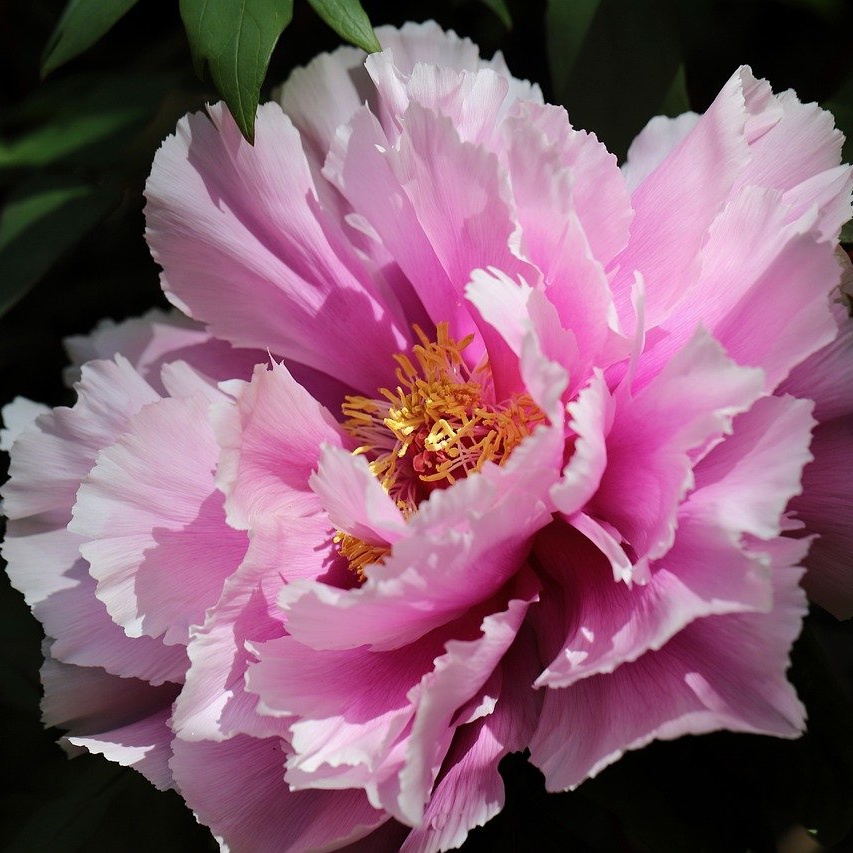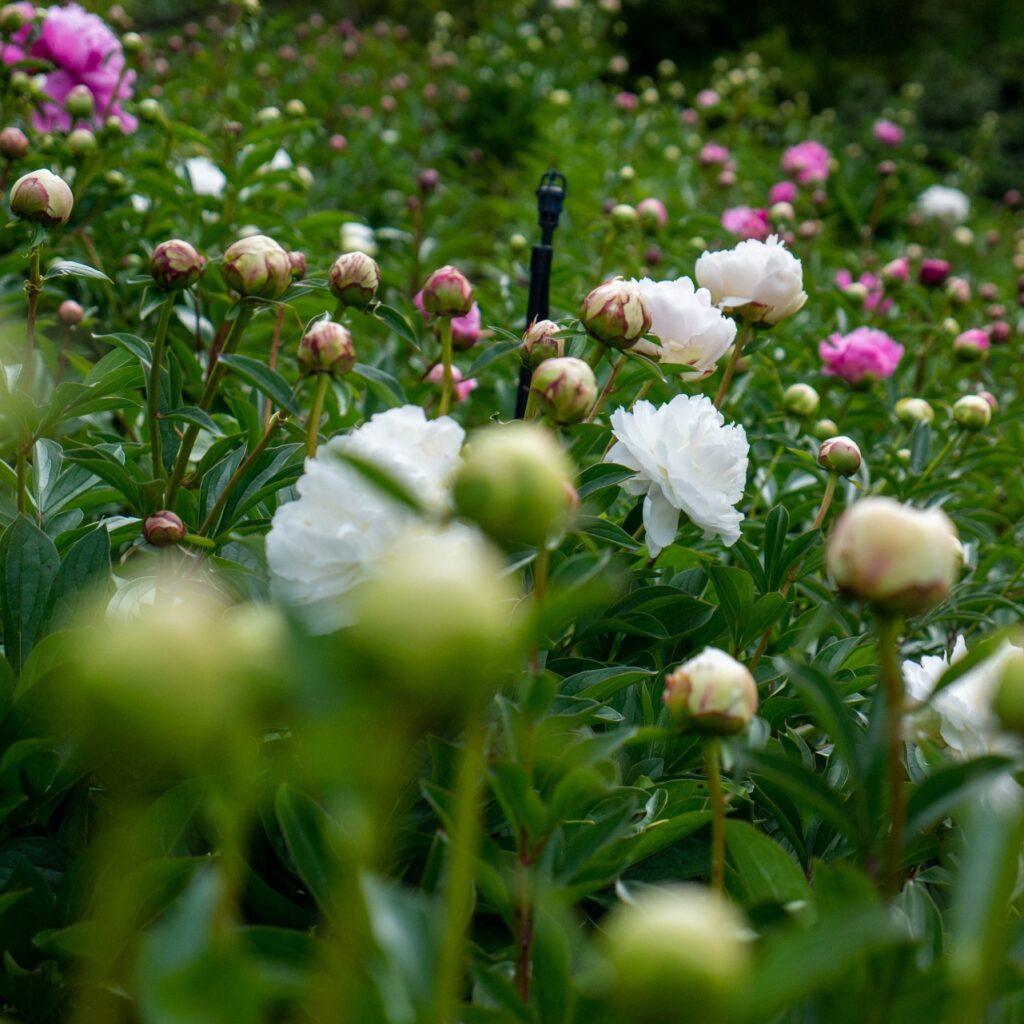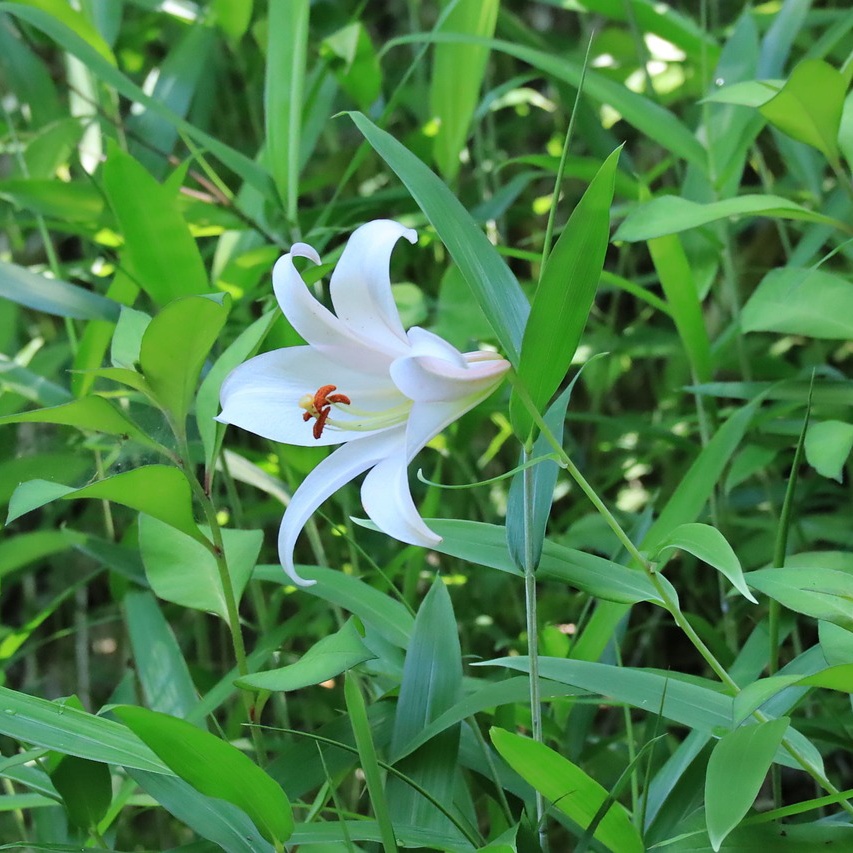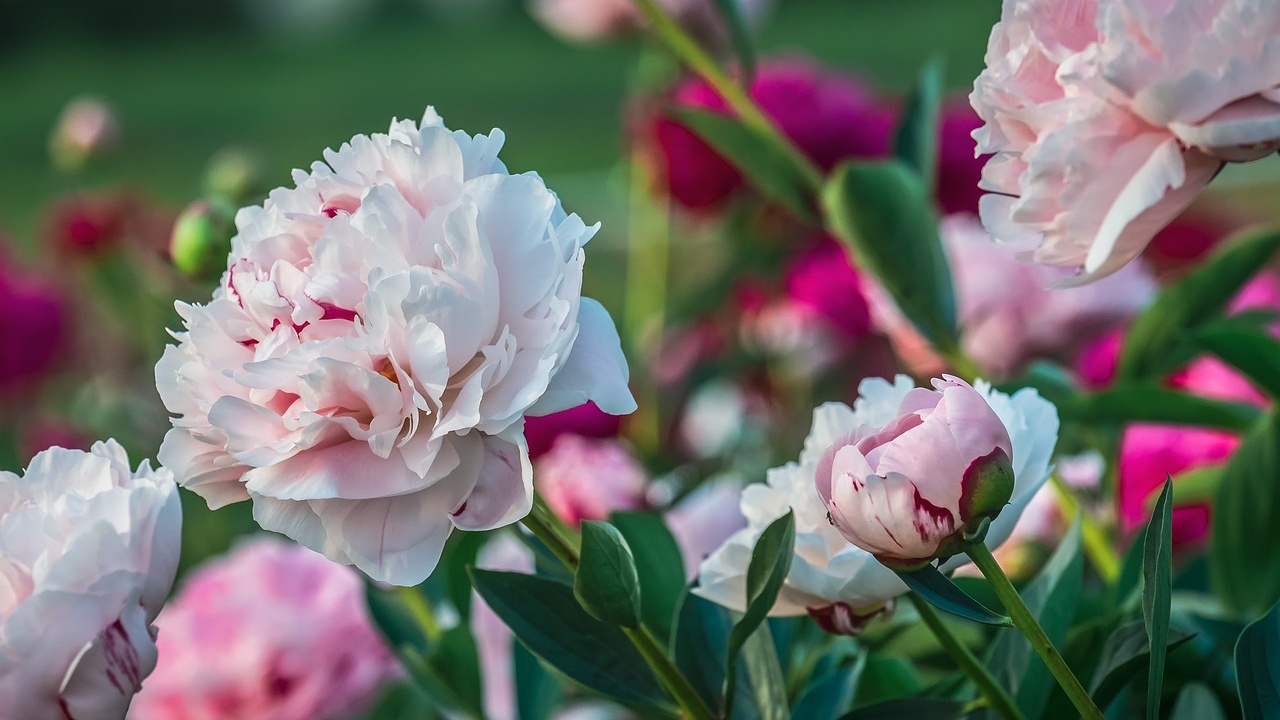2024年4月30日~5月4日の暦/From April 30 to May 4

二十四節気(にじゅうしせっき)は穀雨(こくう)
穀物を育てる春の雨が降るころ
七十二候(しちじゅうにこう)は牡丹華(ぼたんはなさく)
牡丹の花が咲くころ

24 Solar Terms is Kokuu.
When the spring rains fall to grow grain.
72 pentads is Botanhanasaku.
When the peonies bloom.
日本語には『立てば芍薬(しゃくやく) 座れば牡丹(ぼたん) 歩く姿は百合(ゆり)の花』という表現があります。これは、立ち姿だけでなく、座っていても、歩いても艶やかさと楚々とした気品ある美しい女性を表す言葉です。
There is an expression in Japanese that goes, “If you stand, you’re beautiful like a peony=Syakuyaku, if you sit, you’re gorgeous like a peony=Botan, and when you walk, you’re elegance like a lily.” This word describes a beautiful woman who is graceful and elegance not only when standing, but also when sitting or walking.
芍薬/Syakuyak

牡丹/Botan

百合/Lily

真っ直ぐに伸びた茎に花を咲かせる芍薬。
枝分かれした先に大ぶりの花をつける牡丹。
自生する山百合や笹百合、鉄砲百合などの日本の百合は、花屋さんで見かける西洋原産のものより小ぶりな花を咲かせます。
Peonies=Syakuyaku bloom on straight stems.
A peony=Botan that produces large flowers at the tips of its branches.
Japanese lilies that grow naturally, such as mountain lilies, bamboo lilies, and gun lilies, have smaller flowers than the Western lilies you see in flower shops.
英語では芍薬も牡丹もpeonyですが、違いとして「草に分類される芍薬と木に分類される牡丹」「ふんわり香る芍薬に、香りのない牡丹」という特徴があります。
In English, Syakuyaku and Botan are both peony, but there are two differences: “Syakuyaku-peony, which is classified as a grass, and Botan-peony, which is classified as a tree,” and “Syakuyaku-peony, which has a soft scent, and Botan-peony, which has no scent.”
また、こちらの宮の森スキンケア診療室さまの記事によると『立てば芍薬~』の言葉は、「生薬(しょうやく)の使い方を表している」そうです。勉強になりました。ありがとうございます。
Also, according to this article by Miyanomori Skin Care Clinic, the phrase “Tateba Paeony~” “represents the use of herbal medicine.” I learned a lot. thank you.




コメント